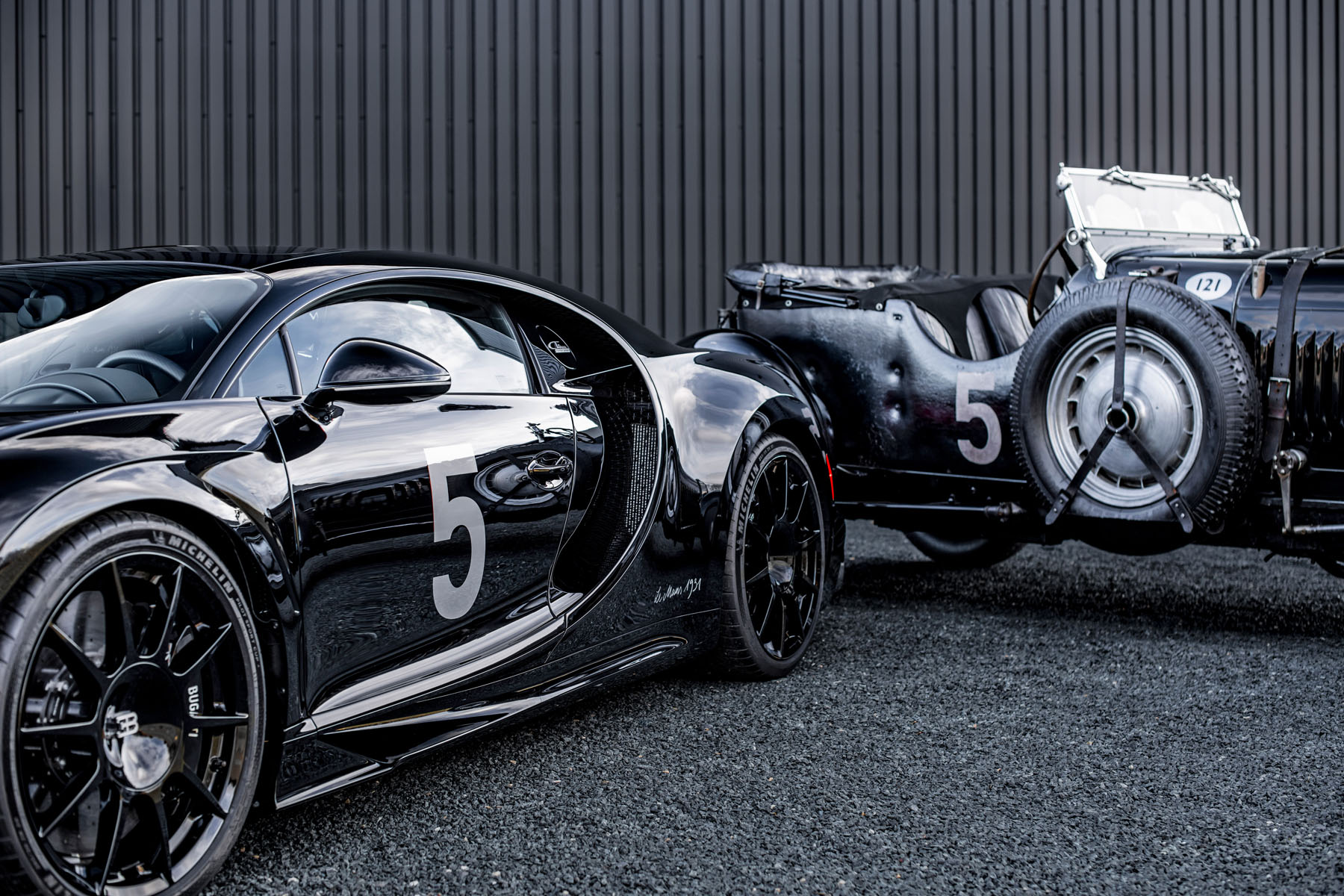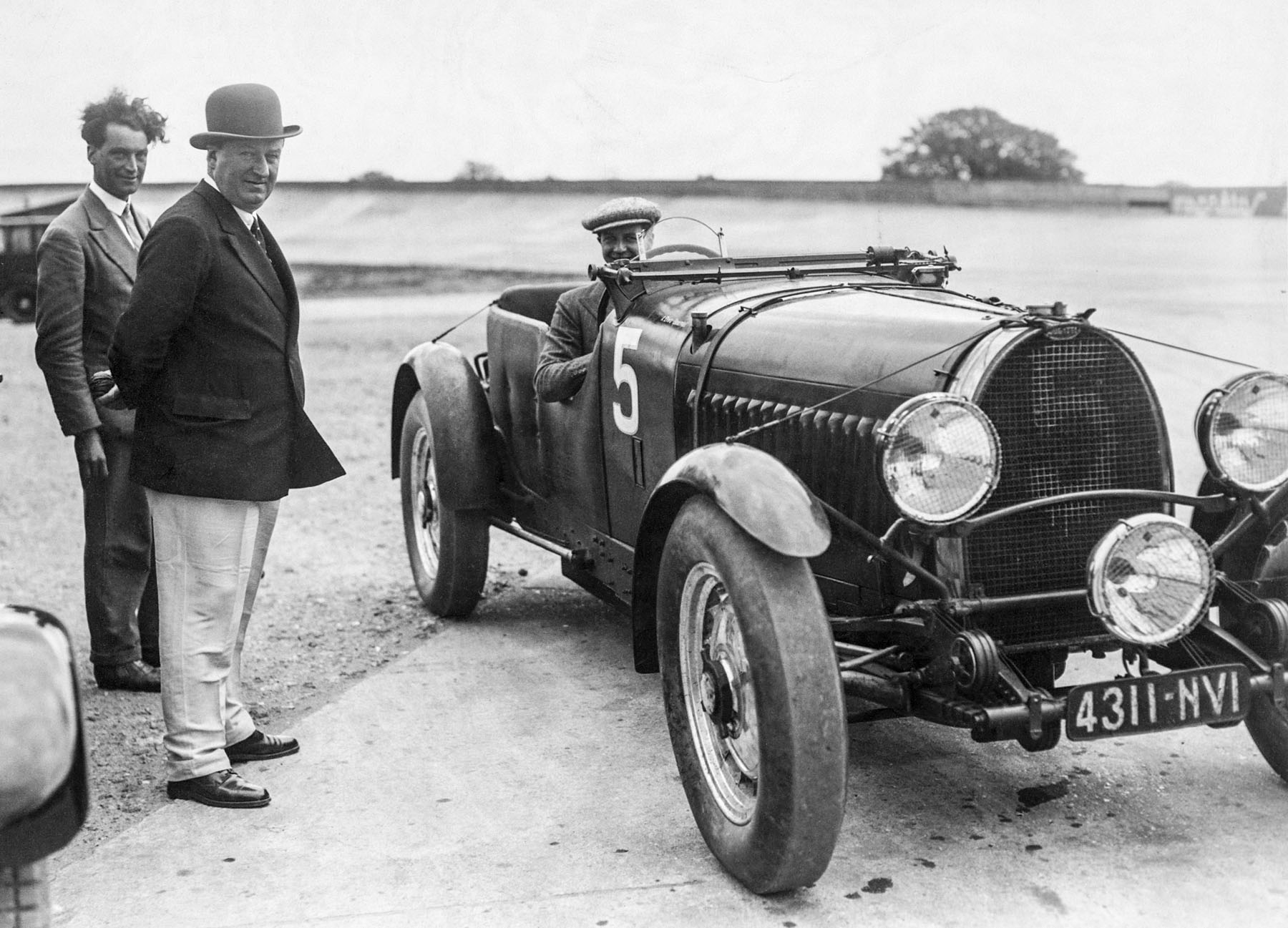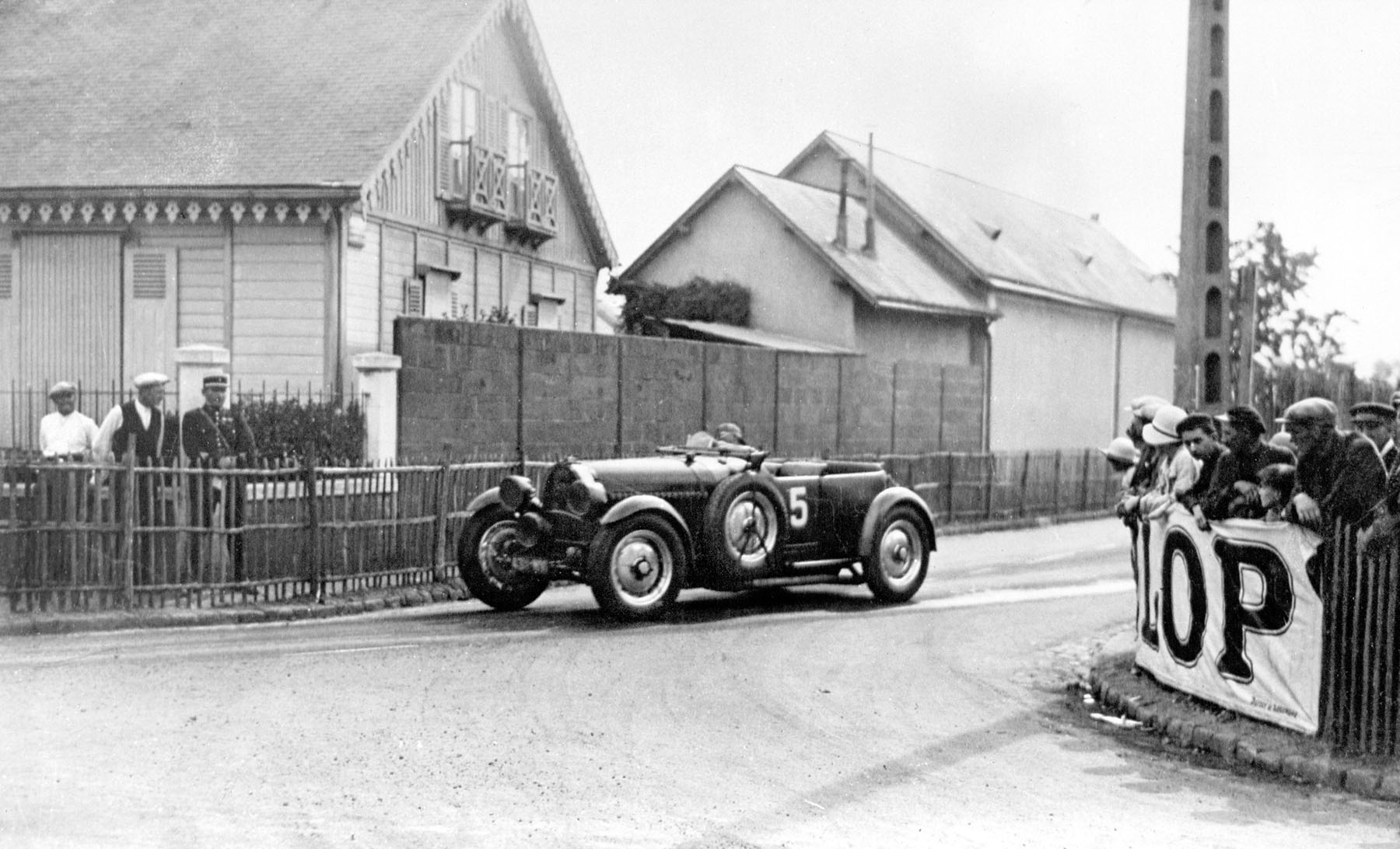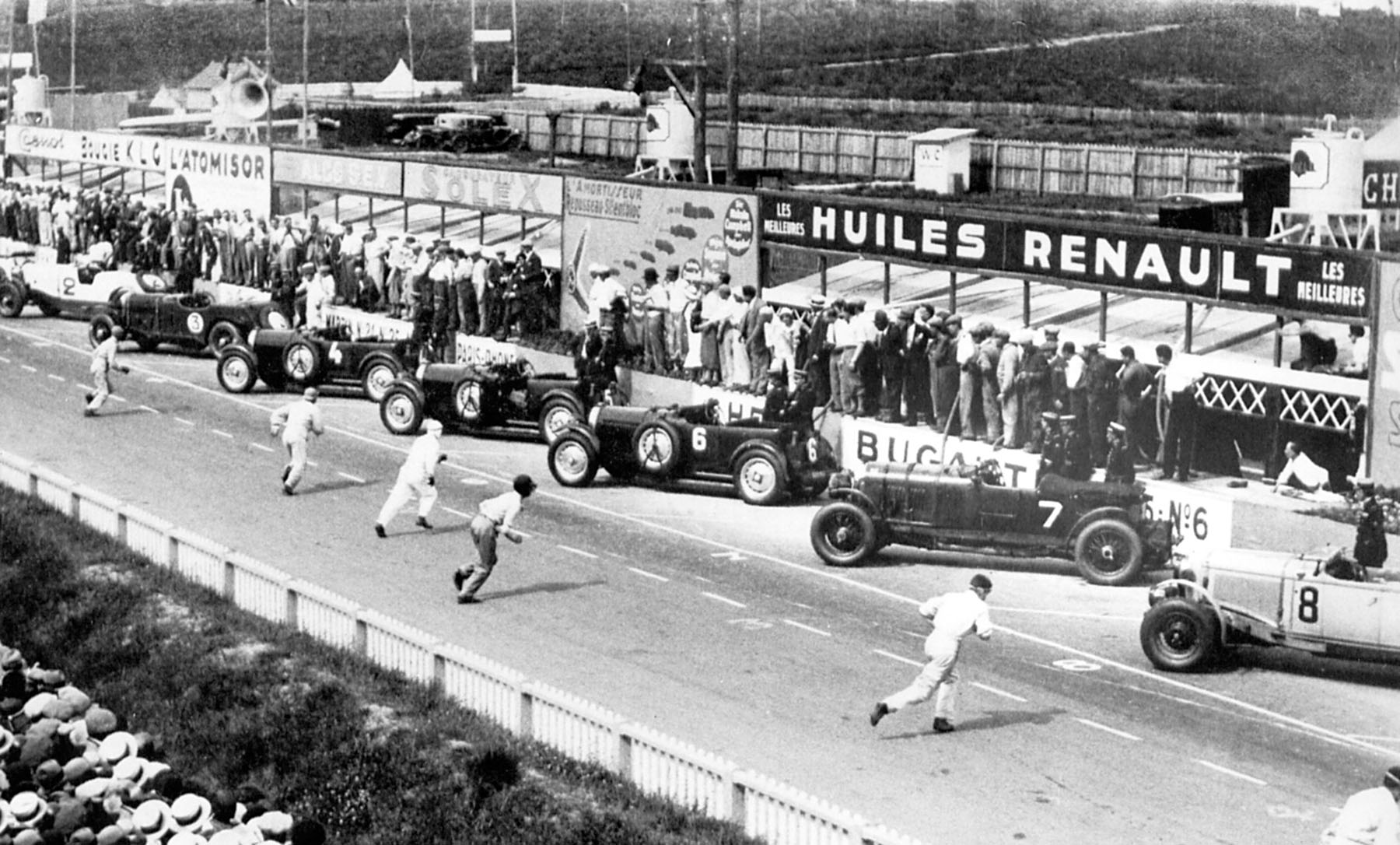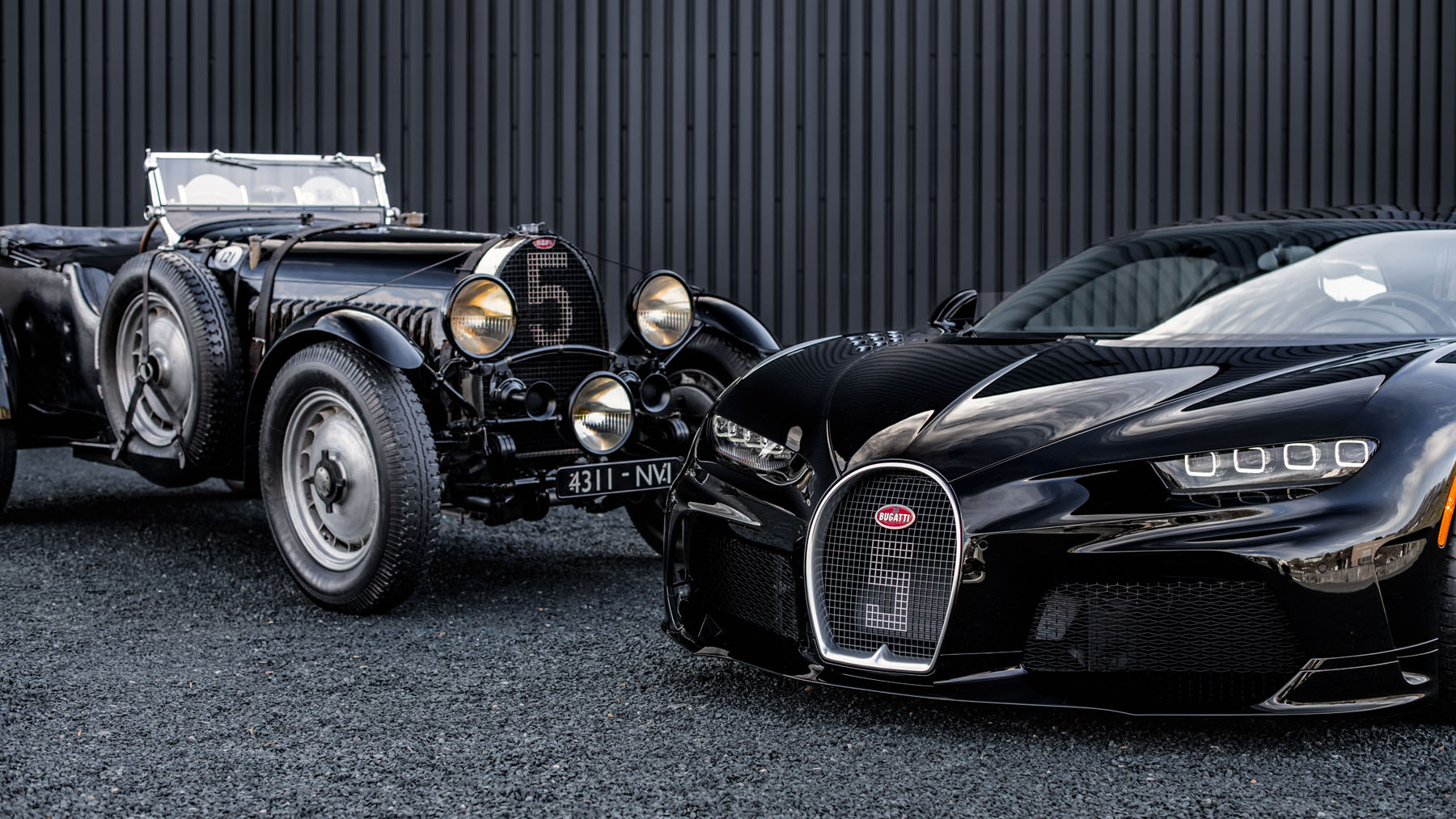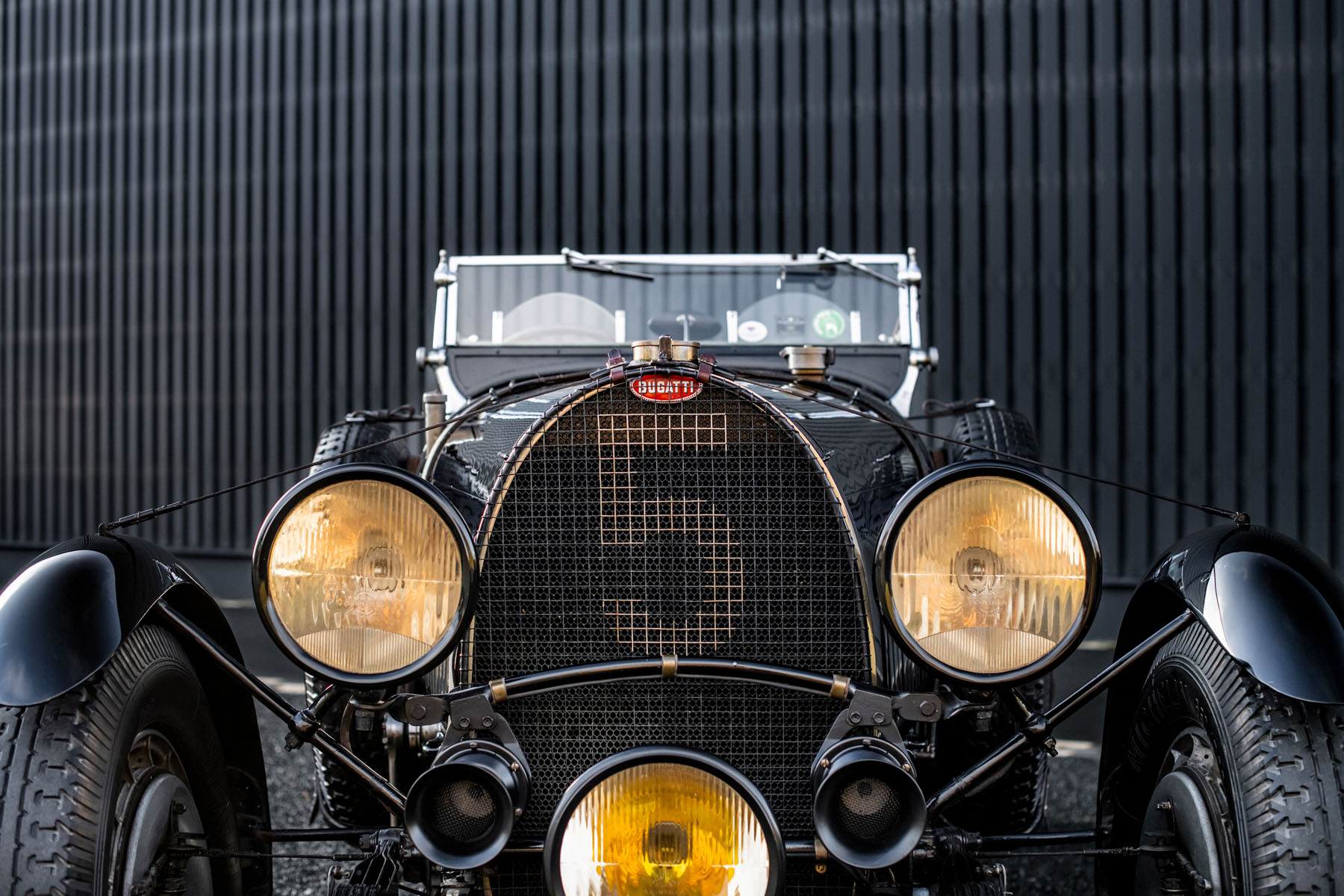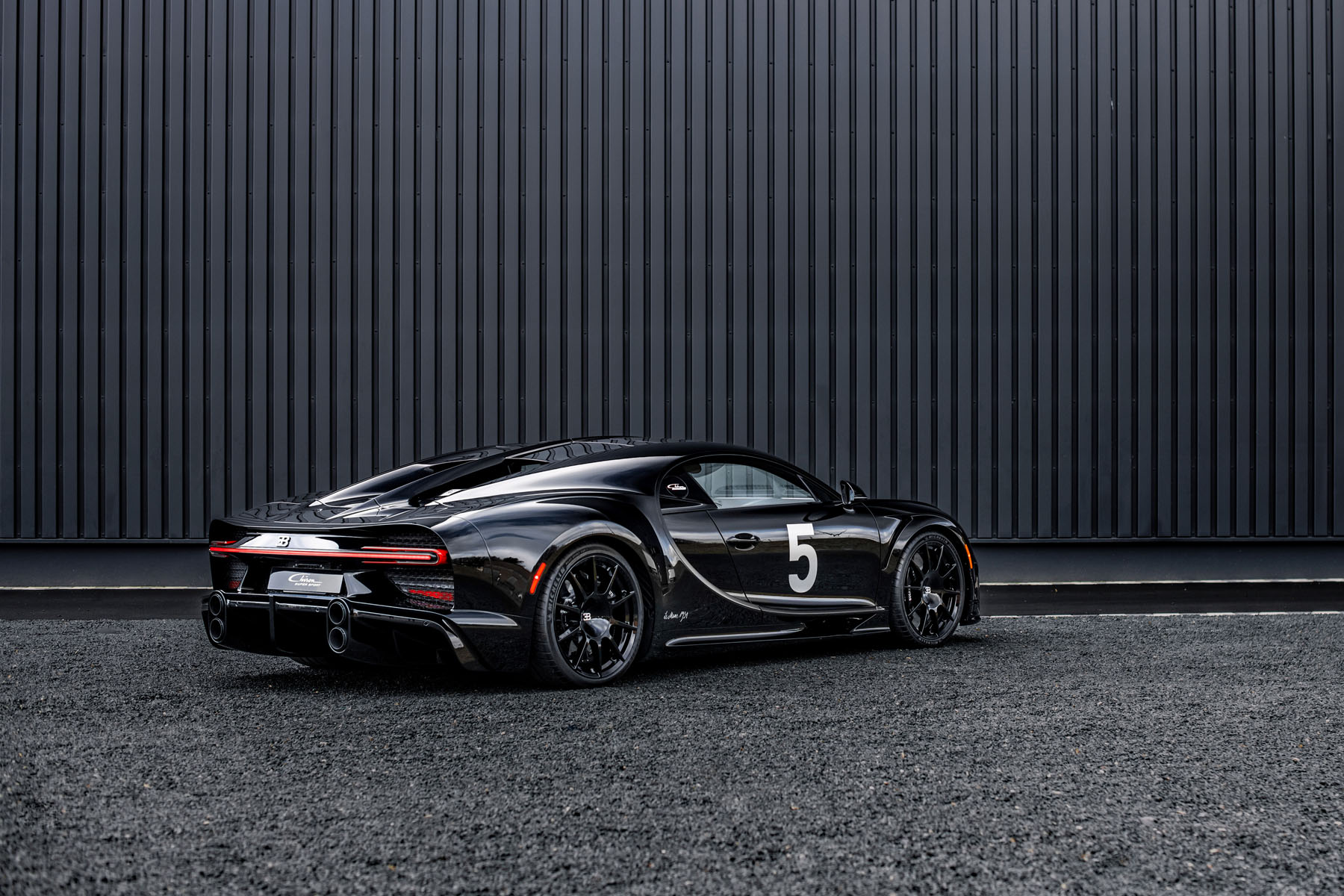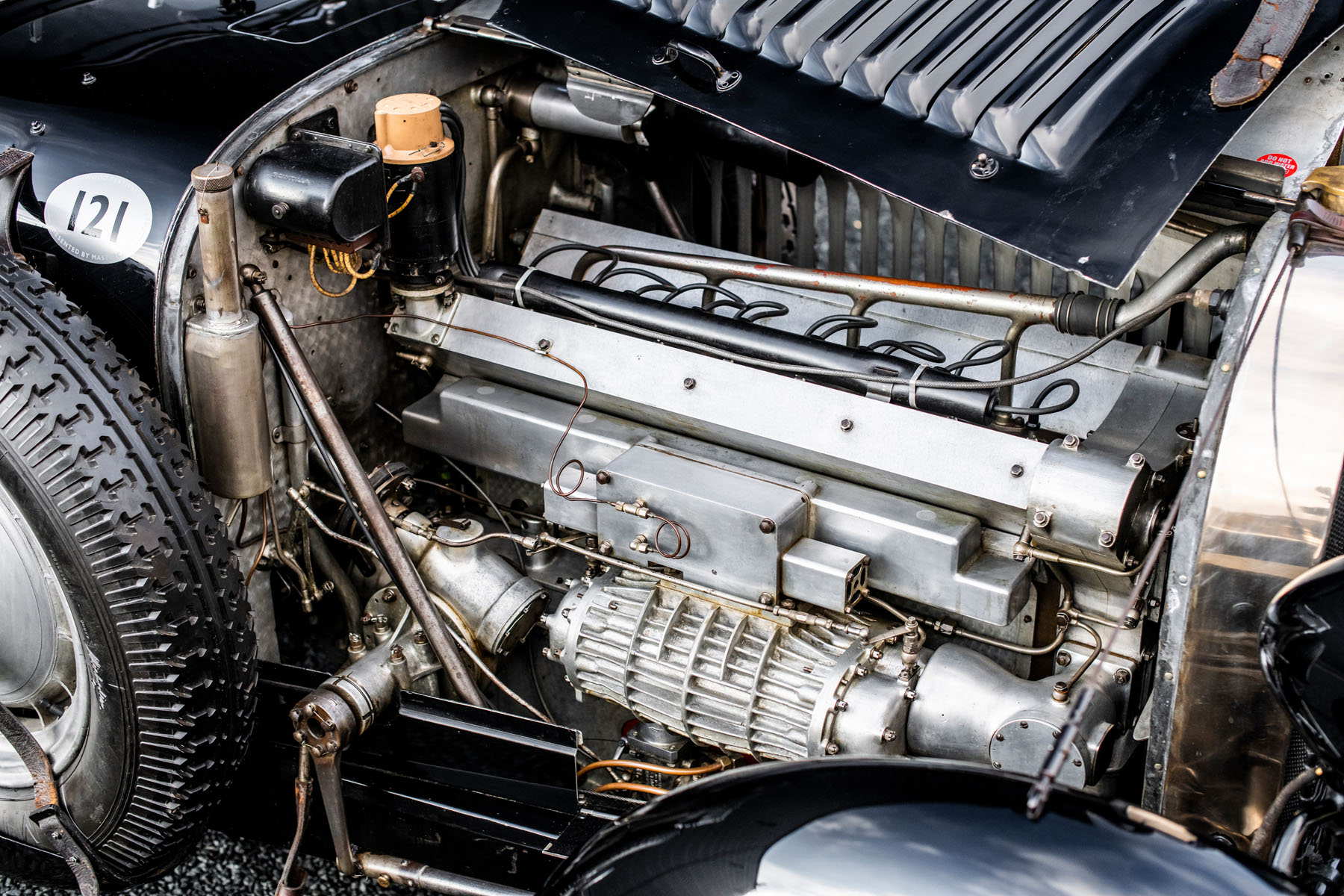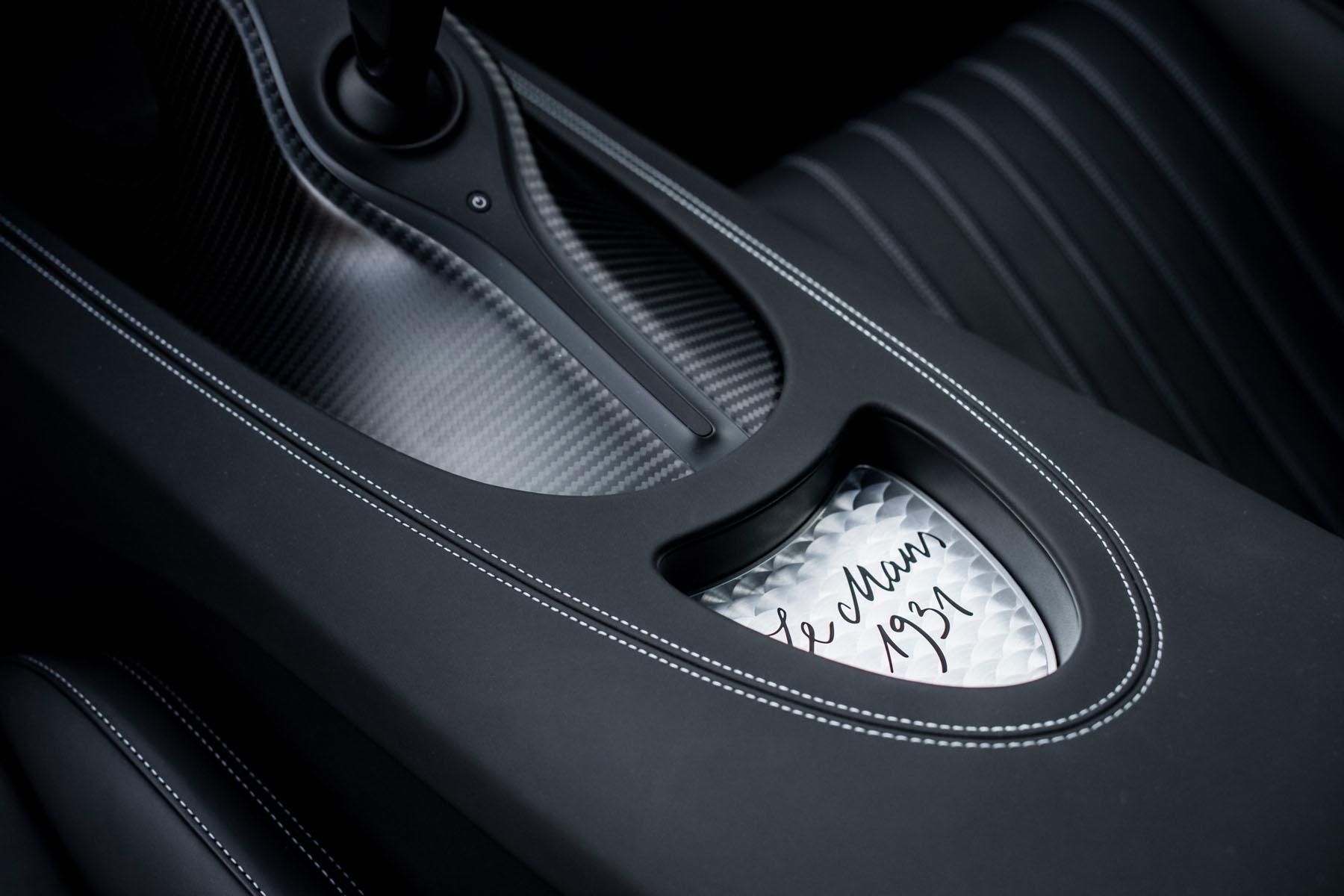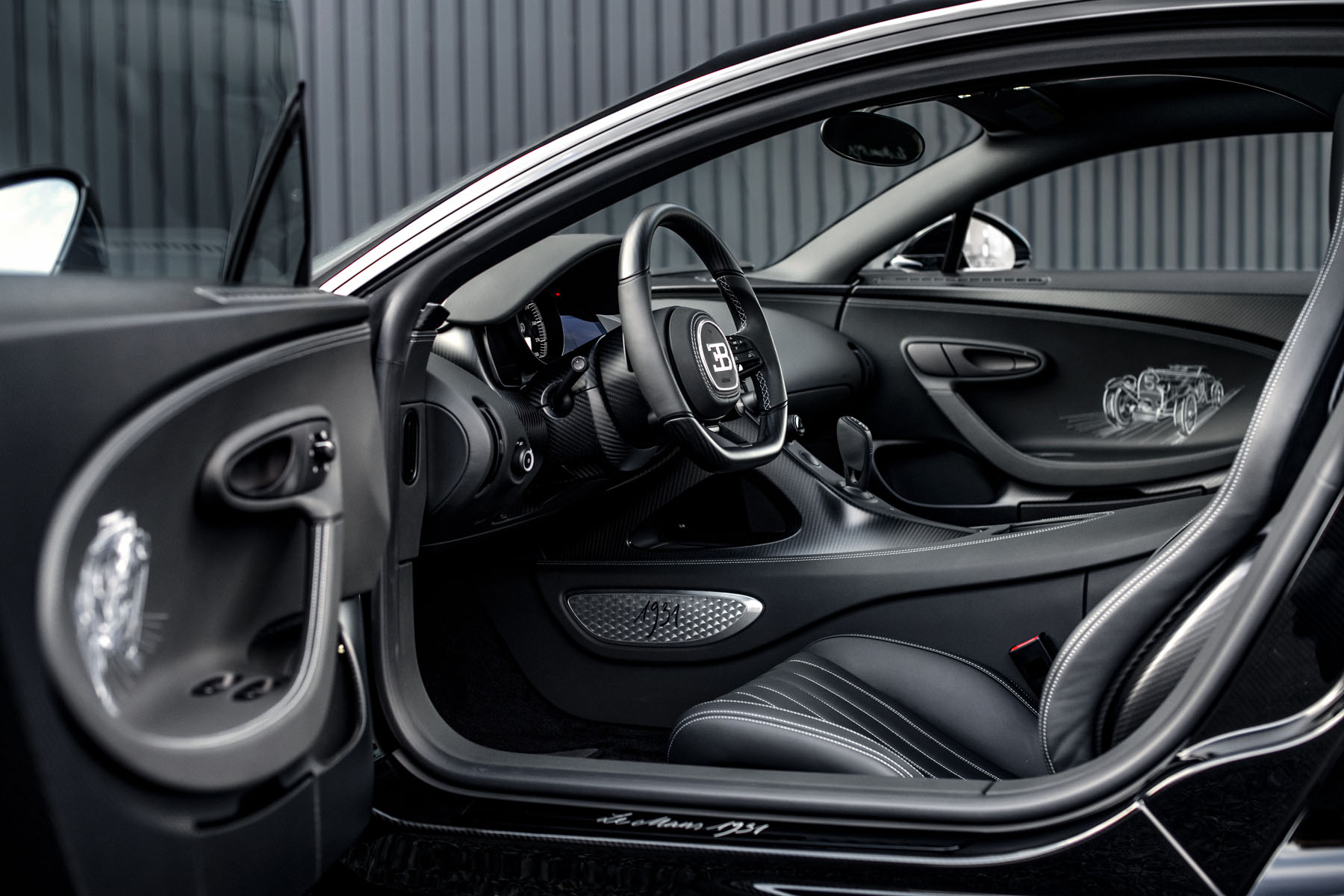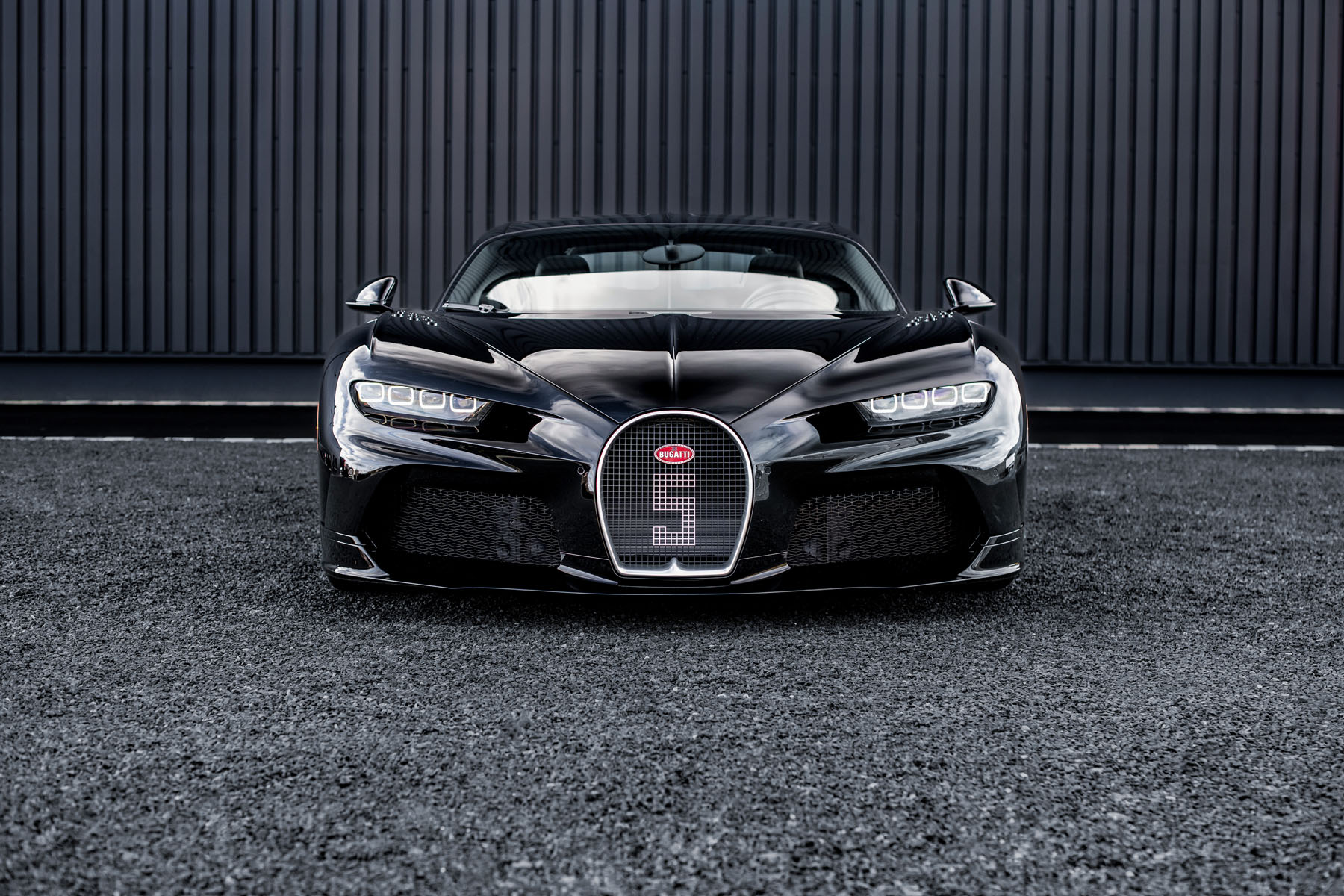The Bugatti Type 50S inspires the new Chiron SuperSport

At the beginning…
In 1937, Bugatti won the 24 Hours of Le Mans for the first time with the Type 57G Tank. But six years earlier, the brand made its official factory debut at the legendary race with a car that would give both Ettore and Jean Bugatti a taste of the thrill of the Circuit de la Sarthe. This groundbreaking creation – the Type 50S – inspired Bugatti’s latest Sur Mesure car: the Chiron Super Sport “Hommage T50S”.
During his visit to the brand’s home in Molsheim and after a conversation with Bugatti’s chief designer Sur Mesure, Jascha Straub, the customer explained that he wanted a black-on-black Chiron Super Sport¹ that could properly honor Bugatti’s history. At this point, he was fascinated by the history – and legend – of the Type 50S.
The Type 50S, which was essentially derived from the famous Type 46, represented the pinnacle of Bugatti’s large-displacement engine line. While Bugatti had previously had success with light, maneuverable racing cars such as the Type 35, the late 1920s and early 1930s were purely an arms race performance-oriented performance. Bugatti’s innovation in this area was a new five-liter eight-cylinder supercharged engine – the first engine with a double overhead camshaft – and an output of around 250 hp.
The ultimate road car
Installing this revolutionary engine in the Type 50S created the ultimate road car; comfortable and luxurious, but also elegant and stylish, but with the performance you expect from modern racing cars. The potential of the Type 50S was so great that Jean Bugatti believed it could compete and win the toughest car race in the world – the 24 Hours of Le Mans. Bugatti sent three separate chassis to the 1931 race, each finished in all-black – rather than the traditional French racing blue – as a subtle nod to the French government refusing to sponsor the venture, but it also functioned as a visual metaphor for one new approach to racing for Bugatti.
The entire group of three cars showed enormous potential, with breakneck speeds on the long straights. Since victory still seemed possible, one of the participants suffered a puncture at high speed and tragically fell off the race track. The two remaining cars – including chassis number. 50177, which served as the inspiration for this modern supersport tribute, was retired by Bugatti to prevent further accidents.
Inspiration of the Chiron Super Sport
The story of the 50177, which received the number “5” when it raced at Le Mans in 1931, was the catalyst that formed the basis for a creative journey for both the customer and Jascha, in which a vision for the Chiron Super Sport emerged from her thoughts and began to come to life on paper. The distinctive, upright grille with its repeating square pattern – complete with the number “5” painted in the center – became the focal point of the front fascia redesign. The Chiron Super Sport’s grille has been redesigned based on the historic car and features a similar design, consistently designed to meet all the aerodynamic and cooling requirements of a car capable of traveling at 440 km/h.
Just like the original, this Sur Mesure (custom) creation is finished in a dark and glossy black, with a contrasting “5” on either side of the car. The “Le Mans 1931” lettering is located just in front of the rear wheel arch, and hidden on the underside is a representation of the Circuit de la Sarthe – every bend, every bend and every straight laid out exactly as the Type 50S would have seen it in 1931 of the rear spoiler, which were carefully designed and installed by the Bugatti experts.
No compromise approach
The heart of the Type 50S experience was its innovative dual overhead camshaft engine, housed in an engine bay almost as beautiful as the car itself. Completed with a guilloché ornamental pattern called “Perlée,” this attention to detail was a hallmark the Bugatti brand and Ettore Bugatti himself. Jascha and the customer were obsessed with this detail and perfectly embodied the brand’s ethos – beauty in every detail.
The process of converting the machine-turned look to a standard that matches the Sur Mesure team’s uncompromising approach to quality was anything but easy. Each circular pattern had to overlap to the exact same extent, every aspect of its design had to be perfectly proportional and designed to withstand extreme heat and everyday wear and tear not just for years, but for decades and generations. As with every aspect of a Sur Mesure job, what seems simple is actually the result of a long and complex process that ensures a perfect finish time and time again.
Pearl finish
The “Perlée” finish is visible on both engine covers and runs throughout the car as a constant visual reminder of its inspiration. A storage area in the center console is now completed with the carefully crafted guilloché material reading “Le Mans 1931”, and the knee pads on either side of the console mimic the pattern, combined with an outline of the Circuit de la Sarthe.
The black interior – highlighted by aluminum and Perlée accents – is brightly lit by the optional Sky View glass roof, giving occupants a taste of the open-air thrills of the original Type 50S. The same original car is recreated in a hand-painted depiction of its Le Mans successes on each door panel, while the words “Le Mans 1931” are hand-sewn into the driver and passenger headrests.
Creating a tribute
“The Type 50S line helped establish Ettore and Jean’s groundbreaking vision in the early 1930s for high-performance, large-displacement Bugatti racing cars that were at the extreme end of high performance,” said Jascha Straub, Sur Mesure chief designer . “The Type 50S – and especially the chassis 50177 – are core parts of our history. It is a real privilege to have such a passionate customer who wants to pay homage to this racing legend. He and I spent many months talking for hours about how we could create an authentic homage, focusing on every detail to ensure it was consistent with the history of the Type 50S but also up to the unparalleled standards of the Bugatti brand .”
Hendrik Malinowski, managing director of Bugatti Automobiles, said: “It may not have the reputation of the Atlantic, the Royale or the Type 35, but we managed to share our enthusiasm for this car with the customer who appreciates the importance of the Type 50S “Once again, the Sur Mesure team, led by Jascha Straub, has delivered an exceptionally personal co-creation project, leveraging our client’s passion, our experts’ insights and our craftsmen’s skills in the creation of a love letter The iconic Type 50S was used. It is not only a tribute to modern design, but the continuation of a story that began almost a century ago.”
Bugatti Automobiles would like to thank the Stiftung Nationales Automuseum – The Loh Collection in Dietzhölztal, Germany, for the generous loan of the original Bugatti Type 50S chassis 50177 photo shoot along with the Chiron Super Sport “Hommage T50S” on its premises. The Loh Collection documents 135 years of automotive history through the exhibition of 150 rare and beautiful cars, including a number of exceptional Bugatti models. In addition to this important piece of Bugatti racing history, the Loh Collection also houses the fascinating Type 57C Aravis, Type 57C Atalante and Veyron Super Sport. Visit www.nationalesautomuseum.de to discover more.
All content © 2024 Bugatti Automobiles SAS

